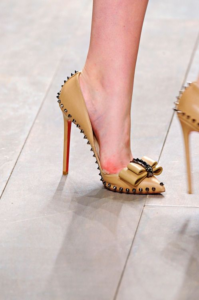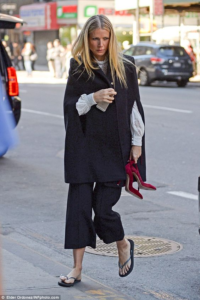
Ouch…
Blisters… we’ve all been there! These incredibly painful skin lesions are caused by excess friction between your skin and shoe (or sometimes skin and skin), and are a sure way to ruin your night. As friction builds the outer layers of the skin become separate from the deeper layers and fill with lymph fluid, blood and even pus! Blisters occur if footwear is not the right size or the leather and stitching is too stiff. They also occur if there is excess moisture around the foot or if it is not stable in the shoe. So how do you avoid these painful lesions? Follow these tips to beat the blister!

Poor Gwyn…
- Do your shoe shopping at the end of the day. The foot swells slightly throughout the day and what might feel fabulous at 9am might become your worst nightmare by 5pm. Just ask Gwyneth!
- Check that the shoe fits correctly and that is there is adequate width and length to accommodate your foot. Also check that the heel counter (back heel area) fits your heel properly. You may need to use a hairdryer on the area to mould it slightly if it is too narrow.
- Wear the shoe around the house with some soft socks for an hour or two before heading out. This will make you aware of any potential areas of irritation and simultaneously loosen up the shoe.
- Use silicone heel grips, strips or spots on areas of rough stitching.
- Use nourishing leather cream or wax on the shoe to soften stiff areas and make them more supple. Make sure you spot test the leather in an inconspicuous area to ensure you don’t stain the leather!
But what do you do if you get a blister?

- Whatever you do-don’t pop it! The outer layer of skin serves as a protective layer and will prevent infection.
- Apply an antiseptic to the area and cover it with a dressing.
- Avoid tight fitting shoes for a couple of days until the fluid in the blister has reabsorbed back into the body. You may wish to apply one of the many blister dressings that are available on the market. These are skin coloured plastic-like dressings that stick directly to the area. They work reasonably well but you should change them regularly to avoid the lesion from getting too macerated. They are a much better look than an ugly band-aid sticking outside your shoe!
- Once the fluid has gone, you should apply a neutral moisturiser such as sorbolene to help soften the callused skin which will assist with it becoming flexible again.
- If the blister is severe you should see your podiatrist who may need to aspirate (drain) the blister with sterile instruments and dress it with an appropriate dressing
So follow these tips and you should get through the next season wearing your favourite foot candy without being caught out like Gwyneth!
Until next time!
E & E


